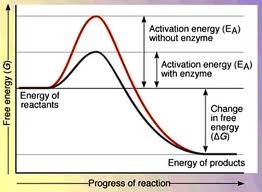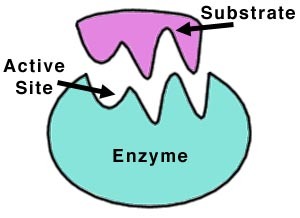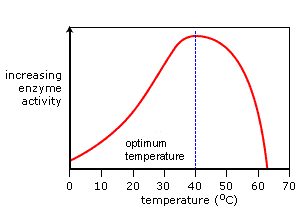Enzymes, Enzymes - Biology
4.0(1)
Card Sorting
1/23
Study Analytics
Name | Mastery | Learn | Test | Matching | Spaced |
|---|
No study sessions yet.
24 Terms
1
New cards
What are enzymes?
They serve as catalysts - speed up or slow down chemical reactions in the body
2
New cards
Enzymes are made of __________.
proteins
3
New cards
How do enzymes catalyse reactions?
They lower the activation energy - they DONT increase amount of product, just the speed at which it is produced.
4
New cards
What happens if an enzyme isn't present for a reaction?
The product will be the same, but the reaction would have been quicker if the enzyme was present
5
New cards
What happens if an enzyme is denatured?
It's structure will change and function is lost. They cannot be fixed.
6
New cards
What does high temperature do to enzymes?
After optimum temp, the enzyme will denature and lose its function.
7
New cards
What does low temperature do to enzymes?
Enzymes & substrates collide less often. Reaction rate is slower.
8
New cards
Lots of active sites and few substrates present is caused from ______________________
High enzyme concentration
9
New cards
Low substrate concentration does what to the reaction?
Lots of active sites and few substrates causes reaction to speed up
10
New cards
High substrate concentration and few active sights causes the reaction to be what?
Few active sites and more substrates causes reaction to be slower
11
New cards
A high/low pH causes enzymes to ____________
Denauture
12
New cards
Activation Energy
The amount of energy needed to start a reaction
13
New cards
What is a substrate?
The reactants of a chemical reaction that fit in the active site of the enzyme.
14
New cards
How do enzymes speed up chemical reactions?
By lowering the activation energy

15
New cards
What is the function of catalysts
Speed up chemical reactions
16
New cards
What is lactase
An enzyme that breaks down lactose.
17
New cards
What is lactose?
A disaccacharide found in milk - substrate that fits in the active site of lactase.
18
New cards
What is sucrose?
A disaccharide found in table sugar - substrate that fits in the active site of sucrase.
19
New cards
What is sucrase?
An enzyme that breaks down sucrose.
20
New cards
Factors that affect Enzyme Activity
pH, temperature, and concentration of enzyme or substrate
21
New cards
Where is the active site?
Specific part of an enzyme where a substrate fits

22
New cards
Lock and Key Model
Enzymes and substrates fit together based on their specific shapes like a key fits a lock

23
New cards
Optimal temperature
Temperature at which enzyme works the best

24
New cards
Denature
Change in shape of an enzyme due to extremes in temperature of pH, causes the enzymes to stop functioning
